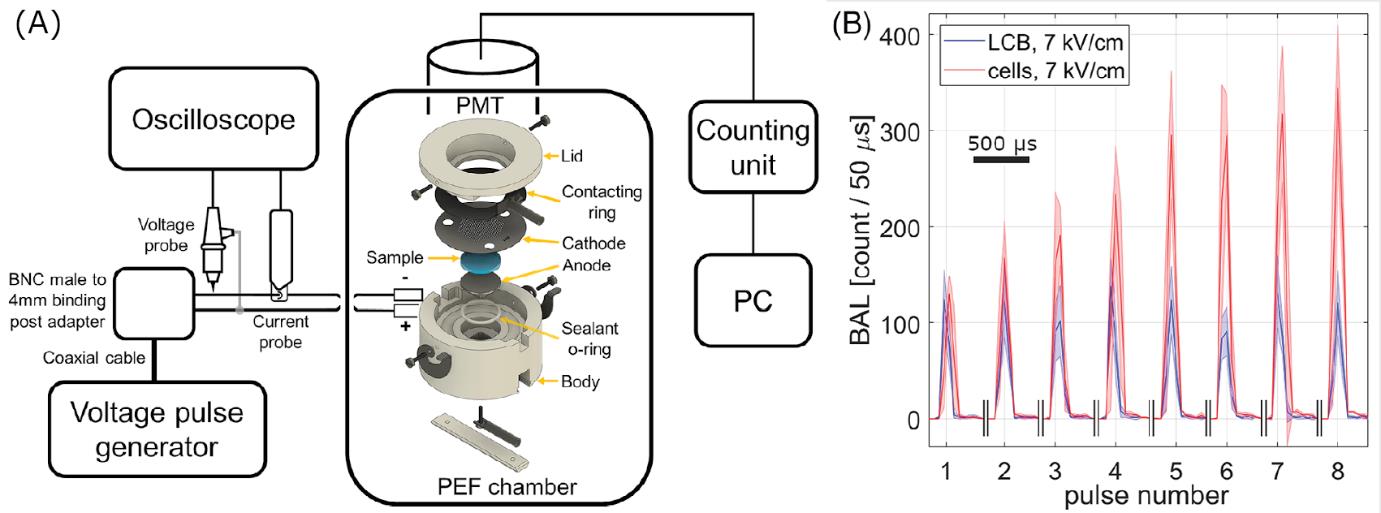Biological autoluminescence allows efficient monitoring of yeast cell electroporation
Investigators: Michal Teplan, Hoang Vu Viet
This work presents the use of biological autoluminescence (BAL) to monitor the electroporation of yeast cells in real time. We have developed a device that can detect changes in the autoluminescence of the yeast Saccharomyces cerevisiae during the application of pulsed electric fields (PEF). This approach offers a non-invasive and non-contact method to assess cell membrane permeabilization. The study demonstrated that BAL can detect electroporation dynamics, with results consistent with established methods. The method could serve as a feedback tool to optimize PEF parameters for various applications. The developed approach is suitable for integration into continuous industrial processes with a need for electroporation monitoring.
Related projects: VEGA-2/0124/22
Publications:
- BERETA, M. – TEPLAN, M. – ZAKAR, T. – VUVIET, H. – CIFRA, M. – CHAFAI, D. Biological autoluminescence enables effective monitoring of yeast cell electroporation. In Biotechnology Journal 19 (4), 2024 (IF 4.7), Q1.
- BERETA, M. – TEPLAN, M. – ZAKAR, T. – VUVIET, H. – CIFRA, M. – CHAFAI, D. Correlation of PEF induced biological autochemiluminescence with yeast cell electroporation. In Book of abstracts 5th World Congress on Electroporation and Pulsed Electric Fields, Rome, Italy, 2024, p.133.

Fig.: (A) Schematic diagram of the experimental setup for measuring luminescence during and after exposure of cells to PEF. PEF chamber enclosed in a light-emitting chamber that allows detection of luminescence using a photomultiplier tube. (B) BAL signal during a pulse sequence with an electric field of 7 kV cm-1 (average of 3 repetitions along with color intervals formed ± SD). The width of each pulse was 100 μs and the gaps between successive pulses were 0.5 μs. The time windows between adjacent pulses were interrupted to make the pulses more clearly visible.
 Contacts
Contacts Intranet
Intranet SK
SK